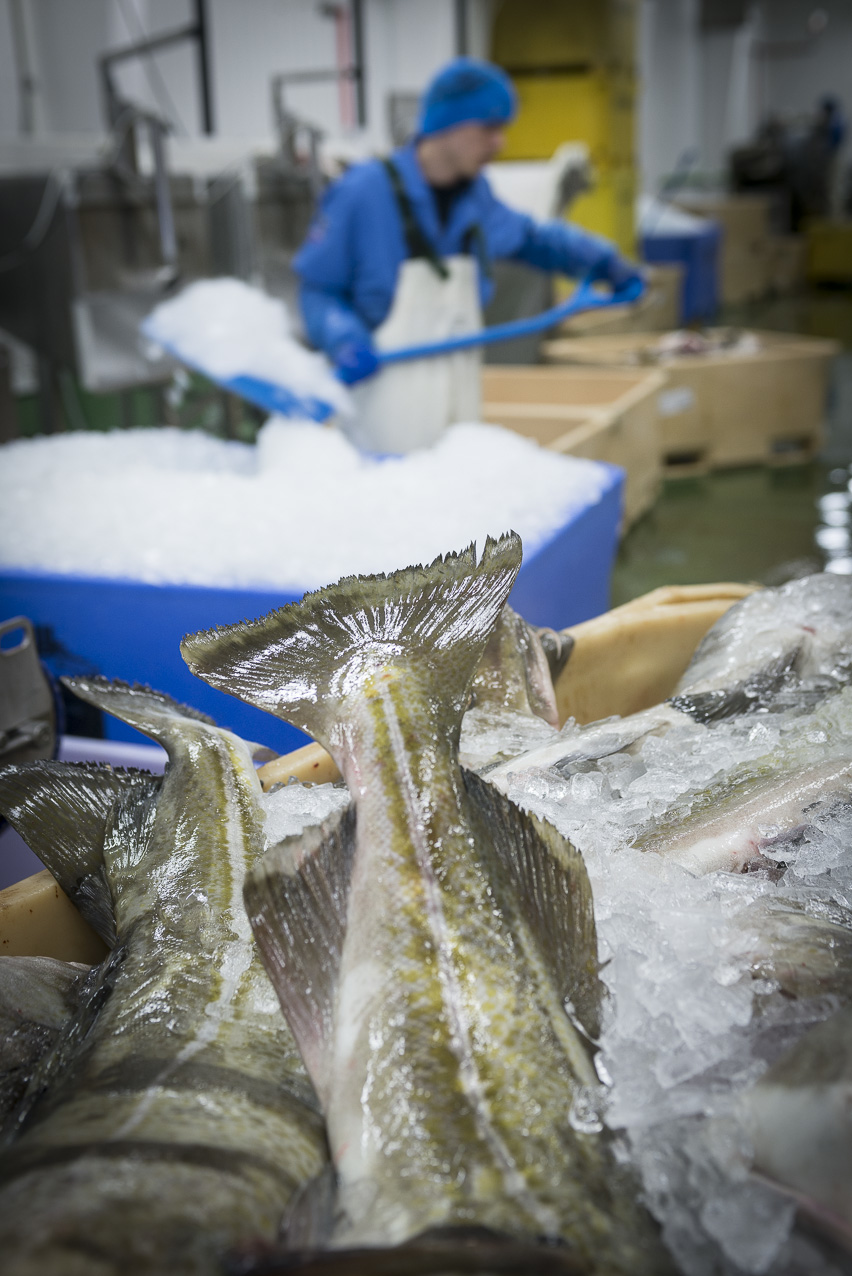

Icelandic mixed demersal fishery
The Icelandic mixed demersal fishery represents a key sector in the Icelandic economy and is as well extremely important for regional development in the country. Fisheries account for 7.2% of Iceland’s GDP, where the demersal fishery accounted for 38% of the landed volume and 76% of the landing value in 2017; and products produced from demersal catches represented 69% of the total seafood export value. The mixed demersal fleet is extremely variable, consisting of approximately 1,300 vessels that range from small dinghies to factory vessels. The fleet operates within the two sub-sections of the Individual Transferable Quota (ITQ) system, where 12-15% of the demersal quota is allocated especially to coastal vessels using hooks as fishing gear (longlining and jigging); and the rest is allocated to an almost fully open ITQ system where all types of fishing gear are permitted. Coastal vessels can choose to operate in either one or the other system, but not in both at the same time. In 2017 the mainstay of the demersal catches was caught in bottom trawls (58%) and longline (23%); with the rest caught in Danish seine (7%), gillnets (6%) and jigging (4%).

Figure from MATIS (Lárus Karl Ingason)
A discard ban was first introduced in the Icelandic demersal fishery in 1977, when discarding of six of the most important species was forbidden. This ban was then gradually expanded and today the ban covers all catches within the Icelandic EEZ. During the four decades that the discard ban has been in effect the authorities have tried to implement various mitigating measures in order to create incentives for compliance.
Model used
The model is an Excel model that enables the user to put a value on the “unwanted” catches of cod, haddock, saithe and redfish that were landed as results of the mitigating measures put in place by the authorities to create incentives to land catches that would otherwise be likely to be discarded. The model assumes that these catches would have been discarded if these mitigating measures were not in place. The model covers landings made during the period 2004-2015 and the values are given as estimated export value (fob) taking into consideration average utilisation factors and average export value of each product/by-product. The model can give results in different currencies (EUR, GBP, USD, ISK, NOK). The user can choose from different options of possible usage of the various by-products of the species. The options include firstly to export the heads of cod, haddock and saithe as dried products while the redfish heads are exported as frozen products. This is in fact by far the most common utilisation of cod, haddock and saithe heads; whilst the utilisation of redfish heads is more fragmented. Exports of frozen redfish heads to be used as bait in lobster and crab fisheries is though quite common. Secondly it is assumed that the remaining part of the VS fish (minus the heads) can be used for filleting. These fillets of VS-catch are assumed to be exported fresh in the model. Thirdly, for MCRS landings, the user can choose whether to export these landings as whole or frozen products. Fourthly, there is an option to see what can be gained by using the total MCRS landings in silage production.
Conclusion :
A lot is currently being gained from utilizing the VS-catch and fish under MCRS in Icelandic waters. Estimated revenues generated between the years 2004 and 2015 for all four species in question were in the vicinity of 150 million Euros, when utilizing VS-catch for filleting and export of dried heads and the catch under MCRS as frozen, whole products (which is the most common utilisation method). Production of silage is not a commonly used alternative in Iceland, as other means of utilisation are more profitable. The model does however explore that alternative, in order to link with suggested utilisation methods identified for example in WP5 and WP6 of the DiscardLess project. The model clearly shows that silage production renders much lower values than the other alternatives that are currently being used. The comparison between exporting the MCRS catch frozen and producing silage from it, shows that the expected revenues generated from the latter prospect returned on average only 10% of the export value of the frozen products. However, in some cases, silage production might be the only viable option and, in those instances, depending on the volume of catches, some good amounts of silage might be produced. When done correctly, silage serves as a good precursor to either fish meal or protein and fish oils.
See also
www.fisheries.is
Further information jonas@matis.is
Citation :
Fiche Iceland, Author(s) :
Jónas R. Viðarsson and Sigurður Ö. Ragnarsson, MATIS
DiscardLess (2019) : Bioeconomic models to analyse LO effects